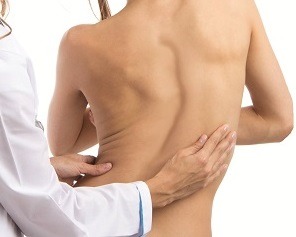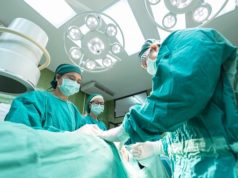
Both bracing and exercise have demonstrable, significant treatment effectiveness for patients with adolescent idiopathic scoliosis. This was the finding of a randomised, controlled trial presenting level one evidence, carried out by Yu Zheng (Interdisciplinary Division of Biomedical Engineering, The Hong Kong Polytechnic University, Hong Kong, China) and colleagues, recently published in Spine.
The study aimed to investigate the effectiveness of orthotic management versus exercise on spinal curvature, body symmetry and quality of life.
Bracing was found to be superior to capture corrections in parameters of spinal curvature (Cobb angle at the first 12 months of intervention, P=0.039), and body symmetry (though not significantly for this parameter). The quality of life scores were significantly better in the exercise group, especially function (P<0.001) and mental health (P<0.001) scores.
Twenty-four patients in the bracing group and 29 patients in the exercise group participated in this study. Patients were randomly assigned to either group. Those in the bracing group were prescribed with a rigid throacolumbosacral orthosis, and requested to wear the brace for 23 hours a day. Patients in the exercise group, meanwhile, were treated with the Scientific Exercise Approach to Scoliosis (SEAS) protocol.
According to Romano et al, writing in Scoliosis and Spinal Disorders in 2015, SEAS is an individualised exercise program adapted to all situations of conservative treatment of scoliosis, though in this study it functioned as a stand-alone treatment (as opposed to being a complimentary treatment to bracing). SEAS is based on a specific active self-correction technique performed without external aid, and incorporated in functional exercises. Improvement of the stability of the spine in active self-correction is the primary objective of SEAS. SEAS exercises train neuromotor function so to stimulate by reflex a self-corrected posture during the activities of daily life.
For the intragroup comparison, parameters of spinal curvature (baseline vs. 12-month, P<0.03 in the exercise group and P<0.001 in the bracing group), quality of life (baseline vs. 12-month, P<0.001), and TAPS (Trunk Appearance Perception Scale) (baseline vs. 12-month, P<0.033) significantly improved over the studied period. Shoulder balance (baseline vs. 12-month, P<0.005) showed significant improvement only in the bracing group.
Data regarding angle of trunk inclination, Cobb angle, shoulder balance, body image, and quality of life were collected every six months.
Writing in Spine, Zheng et al contextualise their research: “A number of well-designed studies comparing conservative treatment of adolescent idiopathic scoliosis (AIS) have been conducted, and the evidence becomes stronger. However, there is a lack of information [sic] on the effectiveness of orthotic management versus exercise.”













